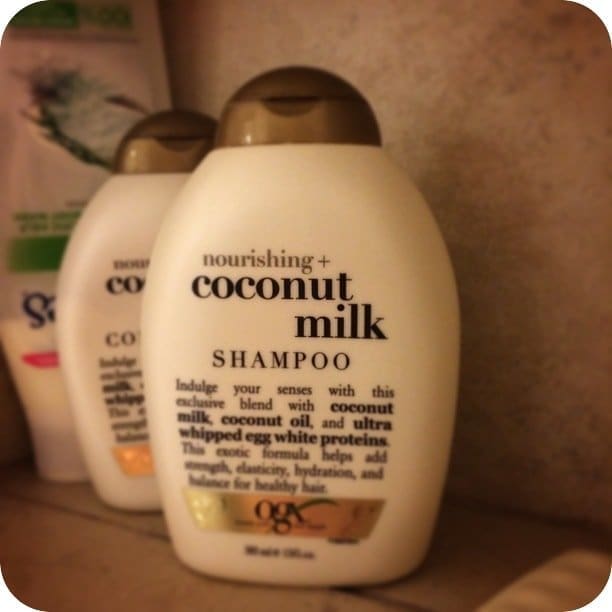A couple months ago I was working with a client on my very first freelance “white paper.”
Two things: On one hand, I feel like this is such a major milestone that I should get a Christmas tree ornament.
On the other hand, my degree is in English. I started writing novel academic research (it was novel to me, okay?) when Madonna was still, like, a virgin.
To say I finally got to write a “white paper” feels a little sheisty, you know?
That’s why I keep air-quoting “white paper,” even with the client.
If I could have been a professional academic in an ivory tower, friends, I would have.
In that world, White Papers represent years of exhaustive research and collaboration within or across laboratories. La-BOR-a-tories.
She blinded me with science! SCIENCE!
White Papers are of academic extraction. They come with abstracts, pages of citations, gnarly statistics, and their very own poster presentations.
Or, at least, in the late 90s, white papers were often accompanied by posters in the halls of the professors’ offices and outside labs.
Stay with me, kids!
In this instance, when I say “posters” I mean hard-copy analog slideshares printed on firm paperboard. I don’t mean users who share to an online forum. Yup, it was that long ago.
Not that kinda white paper.
The white paper I wrote this summer does not come with an abstract or a poster or pages of citations.
It has a link, downloadable pdf, much higher production quality, much lower reading level, and integrated calls-to-action, landing pages, and email / confirmation page copy that says, in essence, “Thanks for playing our game. Here’s your copy of the white paper.”
It’s a glossy B2C brochure / article / investment in long-form content marketing that can now be piece-parted out and repurposed into multiple formats and soundbites. Plus, it’s a coffee table item, a waiting room read.
Because of the nature of this business, it’s also a small port in the storm for its readers.
It was written with the intent to extend a lifeline and offer hope and renewed energy to a reader, storm-tossed and bewildered by hard times.
I’m pretty darn chuffed with it.
Then the client asked me if people actually read white papers…
Well. Derp.
The older I get, the better I get at saying, “Aw hell, man, I don’t know. I’ll find out an get back to you.”
He caught me on an off day. So instead of leaving it at that, I did some hand-waving.
Anecdotally, I expect the answer to be that yes, white papers DO move the needle. If they didn’t, so many big enterprises wouldn’t keep doing it.
I have know stats or analytics to put behind that, though.
I believe I babbled something about how I read shampoo bottles in the shower, so yeah…

Enter the Experts: Does Anybody Read White Papers?
I reached out to our panel of experts who have previously contributed to our roundtables: “Dearest experts, here’s a softball slow pitch. Take it how you like it.”
Notably, in compiling the responses, I still have no stats or analytics.
One respondent, who shall remain anonymous, replied that they wouldn’t mind supplying me with stats to share with my client.
However, their hands were tied by strict non-disclosure agreements and couldn’t share stats for public consumption.
[You guys, there’s just no way to respond to that message without sounding all “grabby hands,” although I tried. Still haven’t heard back. Alas.]
Another note, more than one of our top-level Content Marketing Experts used the word “still” in their responses, even though I didn’t suggest it in my request for comment.
I find that telling — that we’re considering “white papers” an older form. Not cave-painting-old, but printing-press-old perhaps?
Lastly, I fielded a few replies that confirmed by bias — folks read them, but the folks who write them don’t know how often, how far, or how well they impact the sales cycle. Basically, I heard, “Geez, we don’t know either.”
Wrote Jenny Magic, Austin-based communications strategist with Raise Your Hand Texas:
Sadly, everyone I thought to ask about white papers didn’t feel qualified to answer your specific question — it seems many white papers are created by freelance/contractor types who don’t have access to analytics and reporting to verify the actual success of the content.
Rhianna Richards, Founder of contentwize in Hong Kong:
Happy you’re asking this question about the use of long-form pieces.
We spend so much time cobbling them together – and questioning their impact over more short-form, scannable briefs.
Another of our respondents, an academic after my own heart:
I don’t have any stats either. But … most white papers make me want to gouge my eyes out.
“You rarely see the death of a content type.”
Joe Pulizzi, Founder of Content Marketing Institute:
Absolutely. In manufacturing and technology specifically, white papers are still a staple on the business side.
For complex concepts that need an in-depth take, white papers still serve an important purpose…and many buyers still like to read information in white paper format.
Even with all the new technologies/forms of content, you rarely see the death of a content type.
“Yes! … The results will be ten-fold.”
Shama Hyder, Founder of Marketing Zen:
White papers are still a great way to distribute content!
Take for example a company that’s selling a product or software solution, what’s a great way to display all the info about said product?
You’ll more than likely include information about the product on its own webpage, but a white paper couples as a great source to provide more in-depth information on the product as well as troubleshooting issues, FAQs, data, comparisons and any success stories with the product.
As an educational source, white papers help people make decisions: Should they purchase the product? Should they look into another route? Will the issue at hand be resolved by investing in the product?
Another great bonus with white papers? People can print them out and keep them on hand.
By providing a white paper in PDF format, you’re allowing prospects to print out the white paper, giving them a tangible item to hang on to.
Temple University completed a study on the effectiveness of digital vs. print and they found that a printed source activated the ventral striatum – the part of the brain that relates to desire and valuation.
That’s a big factor to take into consideration if you’re trying to decide whether to have a white paper or not.
So do people still read white papers? Yes! While white papers take a longer time to create, the results you see will be ten-fold.
“People have no patience for boring content.”
Christine Cavalier, Behavioral Expert and Writer:
I feel like Christine completely gets me and my little rant about academic “White Papers” versus glossy marketing pieces.
White papers are meant to be comprehensive studies of one particular issue in the business.
Unfortunately they tend to be marketing pieces themselves, usually for that business’ products and services.
People read the first page or two of a white paper but if the work reeks of “marketing!” they stop reading.
The purpose of an academic-like paper is to position the authors as experts in a field.
Sharing knowledge is an efficient way to support that claim (blogs, webinars and podcasts are other ways to showcase expertise).
Be warned, though: people have no patience for boring content.
Your white paper may be a genuine work of interest, but if it reads like a user’s manual to 18th century Russian tort law, no one will get past page 1.
Worse, a reader may build a corresponding (i.e. negative) view of the authors. A studious work like a white paper can be engaging.
Let your passion for the subject come through. Do a ton of research. Write it all down. Then hire a professional writer to polish it up. An interesting, helpful white paper is a great addition to a brand’s online presence.
Christine is anticipating our follow-up post — how to craft an engaging, compelling, worthwhile piece of long-form marketing content.
Myself, I’m particularly pleased with her admonition to hire a professional writer.
In next week’s post, friend of the blog, Tim Walker, is going to flesh out that how-to. Here’s a preview:
If by “white paper” you mean “dry research report,” then no, don’t do that, because people seldom read them. But if you mean “engaging document that actually helps people solve their problems,” then yes, do that, because people always want help solving their problems.
Featured Image Credit: Baby’s First Christmas by Flickr User, William F. Yurakso, adapted for this post according to Creative Commons Attribution 2.0 Generic.
Suzanne Hoenig
Latest posts by Suzanne Hoenig (see all)
- The Anti-Social-Media-Marketing Manifesto 2016 - October 19, 2016
- Which 3 Social Media Platforms Will Be Around in 3 Years? - October 13, 2016
- White Papers: Still a Way to Compel and Convert Leads - September 14, 2016





